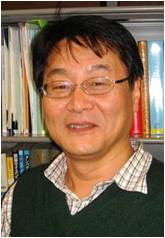Faculty
Yohei Hirai
Major research fields
 Regenerative Medicine, Cell Bilology
Regenerative Medicine, Cell Bilology
With the recent progress in organ transplantation technology and stem-cell research, the practical application of regenerative therapy using stem cell-derivatives has come to public attention. To increase the feasibility of this new concept, however, kinetics and the functional expression of engrafted cells should be strictly controlled in well- organized 3-D tissues. So far, many researches have elucidated part of molecular mechanisms underlying the tissue morphogenesis to accumulate background information for successful cell transplantation. They include: 1) how nascent cells differentiate into functional ones;2) how they establish the proper polarity and the cell-cell junctional apparatus that enable cellular communications,;3) how they arrange functional multicellular structures; and 4) how they determine the overall size and control the shape of the tissue. All such dynamic cellular behaviors are known to be directed by the concerted action of many external signals for cell differentiation and tissue remodeling. We have paid special attention to the roles of signaling elements in tissue morphogenesis, which elicit rapid and focal responses in the cells without time-consuming transcription and translation processes, e.g., certain t-SNARE proteins, which usually function at the cytoplasmic surface of the specific plasma membrane domains, rapidly translocate across the membrane to activate latent morphogenic functions in response to the external stimuli. In our laboratory, attempts are made to offer new insight into molecular bases for tissue morphogenesis, hoping to open ways to useful regenerative treatments.
Major relevant publications
- A newly established culture method highlights regulatory roles of retinoic acid on morphogenesis and calcification of mammalian limb cartilage. (2015). Masuda E, Shirai K, Maekubo K and Hirai Y. Biotechniques. 58(6):318-24. doi: 10.2144/000114300.
- Extracellularly Extruded Syntaxin-4 Is a Potent Cornification Regulator of Epidermal Keratinocytes. (2015). Kadono N, Hagiwara N, Tagawa T, Maekubo K and Hirai Y. Mol Med. 21(1):77-86. doi: 10.2119/molmed.2014.00234.
- CCAAT/enhancer binding protein beta (C/EBPβ) isoform balance as a regulator of epithelial-mesenchymal transition in mouse mammary epithelial cells. (2014). Miura Y, Hagiwara N, Radisky DC and Hirai Y. Exp Cell Res. 327(1):146-55. doi: 10.1016/j.yexcr.2014.05.019. Epub 2014 May 29.
- Krtap11-1, a hair keratin-associated protein, as a possible crucial element for the physical properties of hair shafts. (2014). Fujimoto S, Takase T, Kadono N, Maekubo K and Hirai Y. J Dermatol Sci. 74(1):39-47. doi: 10.1016/j.jdermsci.2013.12.006.
- A novel three-dimensional cell culture method to analyze epidermal cell differentiation in vitro. (2014) Okugawa Yand Hirai Y. Methods Mol Biol. 1195:183-90. doi: 10.1007/7651_2013_45.



